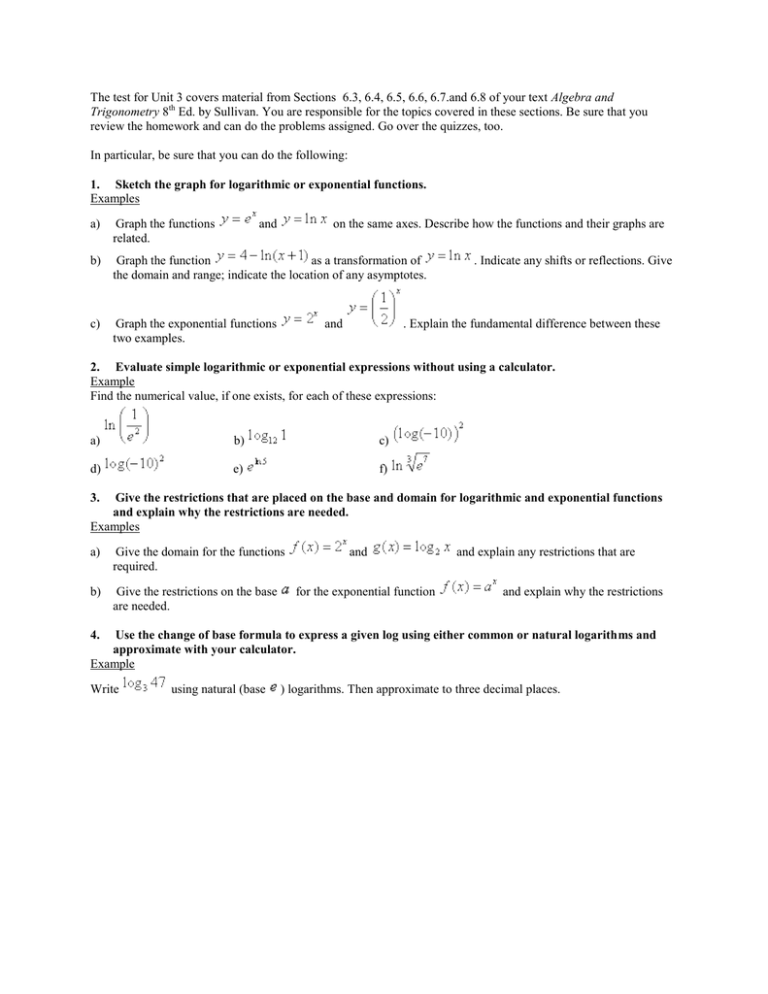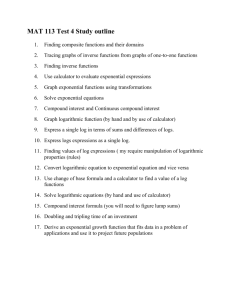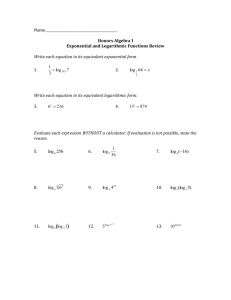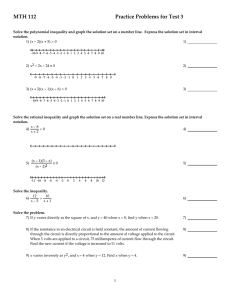Algebra and Trigonometry
advertisement

The test for Unit 3 covers material from Sections 6.3, 6.4, 6.5, 6.6, 6.7.and 6.8 of your text Algebra and Trigonometry 8th Ed. by Sullivan. You are responsible for the topics covered in these sections. Be sure that you review the homework and can do the problems assigned. Go over the quizzes, too. In particular, be sure that you can do the following: 1. Sketch the graph for logarithmic or exponential functions. Examples a) Graph the functions related. and on the same axes. Describe how the functions and their graphs are b) Graph the function as a transformation of the domain and range; indicate the location of any asymptotes. c) Graph the exponential functions two examples. and . Indicate any shifts or reflections. Give . Explain the fundamental difference between these 2. Evaluate simple logarithmic or exponential expressions without using a calculator. Example Find the numerical value, if one exists, for each of these expressions: a) b) c) d) e) f) 3. Give the restrictions that are placed on the base and domain for logarithmic and exponential functions and explain why the restrictions are needed. Examples a) Give the domain for the functions required. b) Give the restrictions on the base are needed. and for the exponential function and explain any restrictions that are and explain why the restrictions 4. Use the change of base formula to express a given log using either common or natural logarithms and approximate with your calculator. Example Write using natural (base ) logarithms. Then approximate to three decimal places. 5. Expand or contract logarithmic expressions. Examples a) Use the properties of logarithms to express as a sum, difference, and/or multiple of logarithms: b) Write as the logarithm of a single quantity: 6. Solve exponential or logarithmic equations. Examples Solve each equation for . Write your solution in exact form. Then when necessary, use your calculator to give the decimal approximation. Round your answer to three decimal places. (Remember to check for extraneous solutions.) a) b) c) d) e) f) 7. Solve application problems in which exponential growth or decay is involved. Examples a) Suppose that an investment of $1000 is deposited in an account that pays 8%. Find the amount in the account at the end of 3 years if the interest is compounded: a. Quarterly b. Daily c. Continuously b) Find the time necessary for an investment of 1000 dollars to quadruple if the interest rate is 10% compounded continuously. c) In 1980, the population of Ames was 45,775. In 1990, the census reported a population of 47,198. Give an exponential model for the population of Ames and use it to predict when the population will rise to 60,000.







